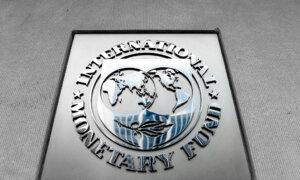Australia’s job market defied expectations in September, with 64,100 new positions added—51,600 of which were full-time roles—well above the predicted 25,000.
This brought the unemployment rate to 4.1 percent, consistent with August’s revised Australian Bureau of Statistics (ABS) figure.
Analysts had been predicting the number of jobs in September would be around half the 47,500 created in August.
Treasurer Jim Chalmers said that over a million jobs have been created since the Albanese government took office.
“This is the first and only time any government of any political persuasion has overseen the creation of a million new jobs in a single parliamentary term,” Chalmers said. “We welcome the fact that the majority of these million new jobs are full time and around half are for women.”
Another milestone was reached: about 10.03 million Australians now have full-time work, the first time the 10 million mark has passed.
The participation rate—the proportion of working-age people in the labour market—was also a record at 67.2 percent, and the total hours worked increased to 1.97 billion.
Around 482,000 people began employment (i.e. they were not employed in August 2024 but were employed in September 2024), while around 391,000 people stopped working.

The NDIS pays for services and products that disabled individuals may need. The scheme has grown rapidly since it officially began operating in 2013.
In contrast, the private sector has slowed to a crawl.
Analysts Warn of Slowdown
While the strong job growth is a positive sign, analysts warn of a slowdown, with fewer employment advertisements and vacancies.Both the Treasury and the Reserve Bank of Australia (RBA) forecast that the jobless rate will rise to about 4.4 to 4.5 percent by the middle of next year, but that rate will still be lower than it has been in most years since the mid-1970s.
The tight labour market is also raising concerns about wage inflation. Many economists believe that this robust jobs data will make the RBA reluctant to cut the Official Cash Rate (OCR) in its upcoming November and December meetings. Before the latest data release, investors were betting on a 40 percent chance of a rate cut by December and a 70 percent chance by February.
While the latest ABS data does not break down job gains by sector, Jobs and Skills Australia—a Federal Government agency—predicts the largest gains over the next ten years will be in the categories of Managers and Professionals and Community and Personal Service Workers.
These two groups comprised 39.1 percent of total employment in 2023 and are projected to account for 40.7 percent by 2033.






